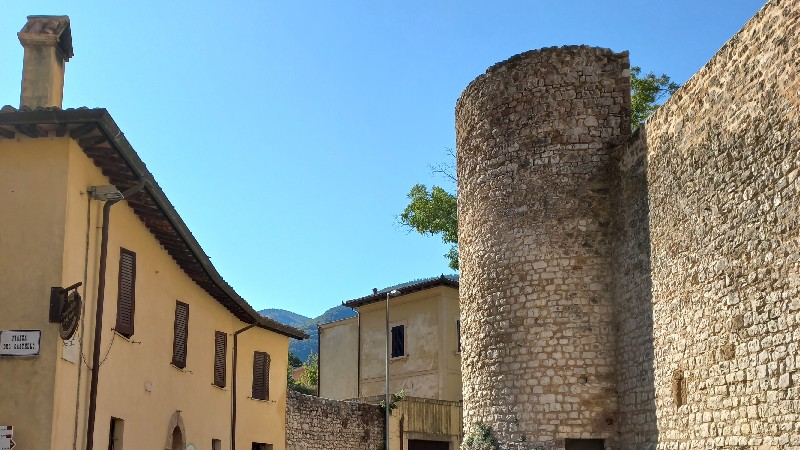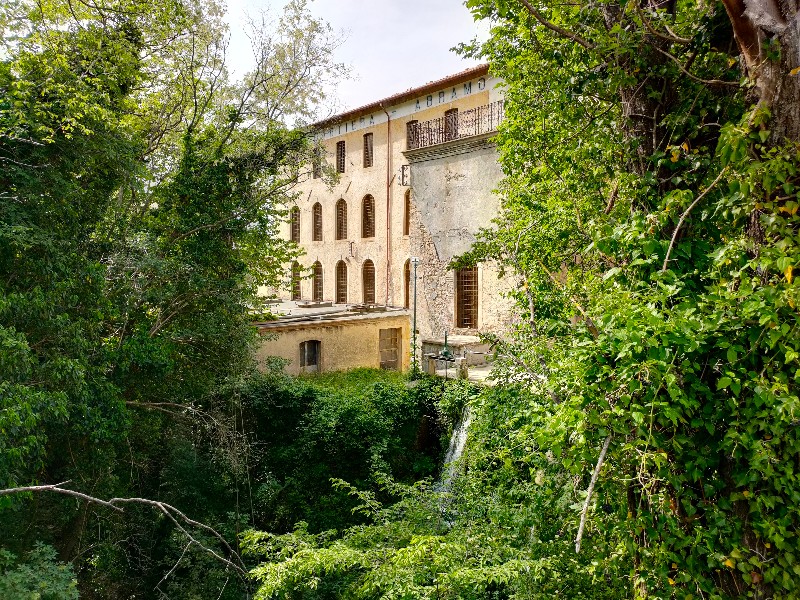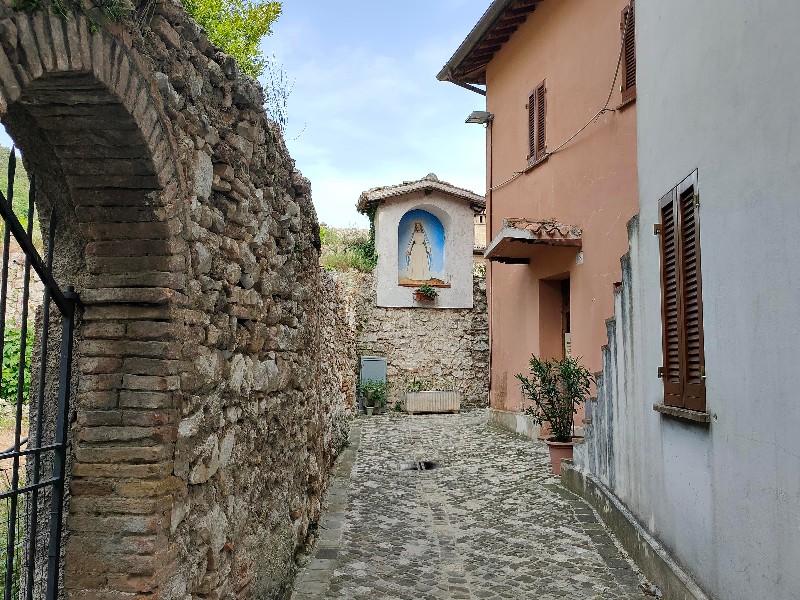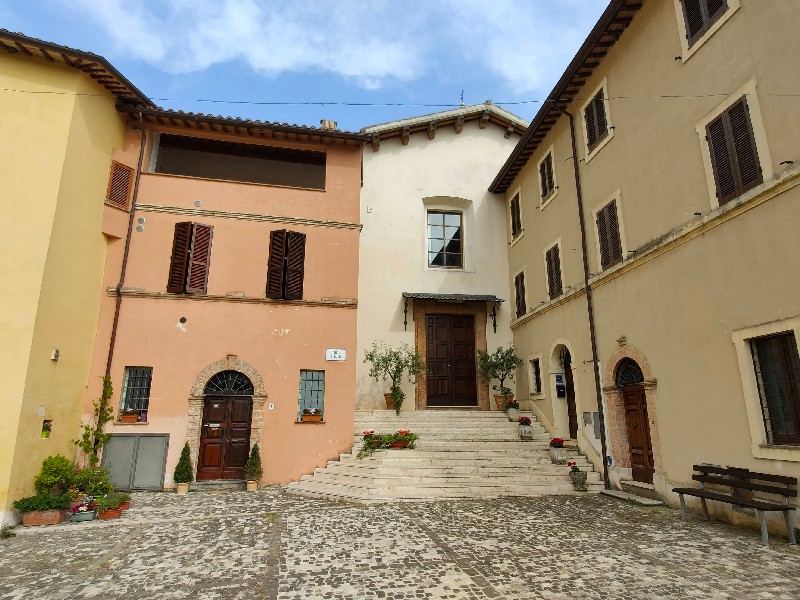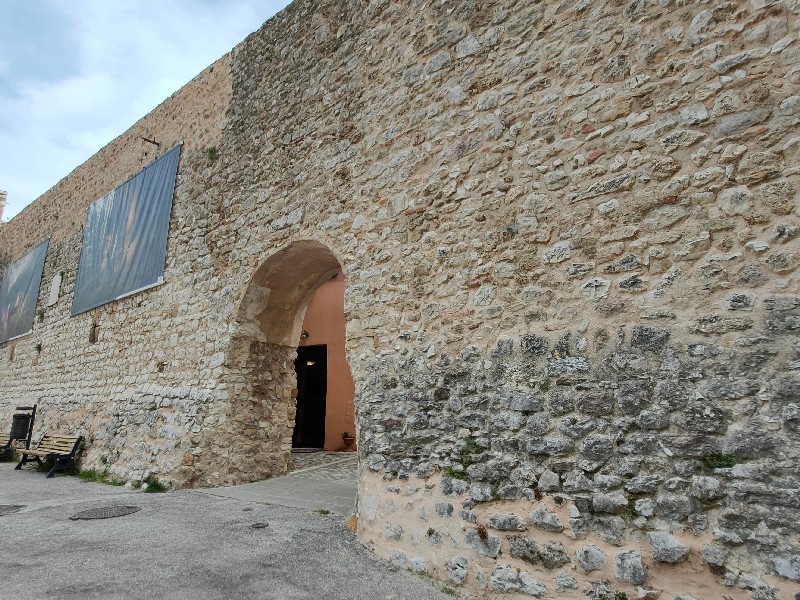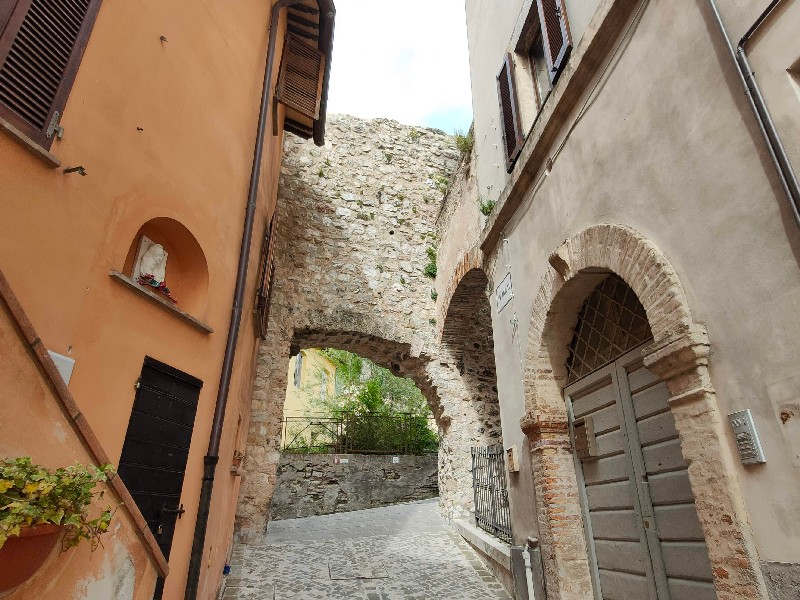The Castle of Pale rises along the Menotre river and is crossed by the ancient road to Colfiorito, or as it is known today, the "Lauretana" way. The core of the castle, surrounded by walls, is bordered to the west by the Altolina Waterfalls. On the opposite side, rises the rocky ridge of the Sasso di Pale, where the Hermitage of Santa Maria Giacobbe stands.
The inhabited area of Pale is attested as early as 970 AD; it is later mentioned in numerous documents, due to its strong relationship with the Sassovivo Benedictine Abbey. From the 13th century on, the important Elisei family from Foligno settled in the castle, adding a palace and gardens which extended towards the waterfalls. The site's productive vocation gradually consolidates, given the growing exploitation of the water as a power source. As a consequence, Pale grew into a village renowned for its many paper mills and for the quality of the paper produced here - a paper so valuable that it was used in 1472 for the first printed edition of the Divine Comedy.

Il progetto Divina Foligno è sviluppato nell’ambito del “programma Agenda urbana di Foligno Smart community - Comunità, Sostenibilità – Foligno 2020” intervento OT.6 INT_01 “Realizzazione della rete di attrattori culturali attraverso la realizzazione di itinerari culturali e tematici

The Divina Foligno project is promoted and financed as part of the "Urban Agenda of Foligno Smart community - Community, Sustainability - Foligno 2020 program" intervention OT.6 INT_01 "Creation of a network of cultural attractions through the creation of cultural and thematic itineraries"

Copyright © 2022 Landmark. All rights reserved.

